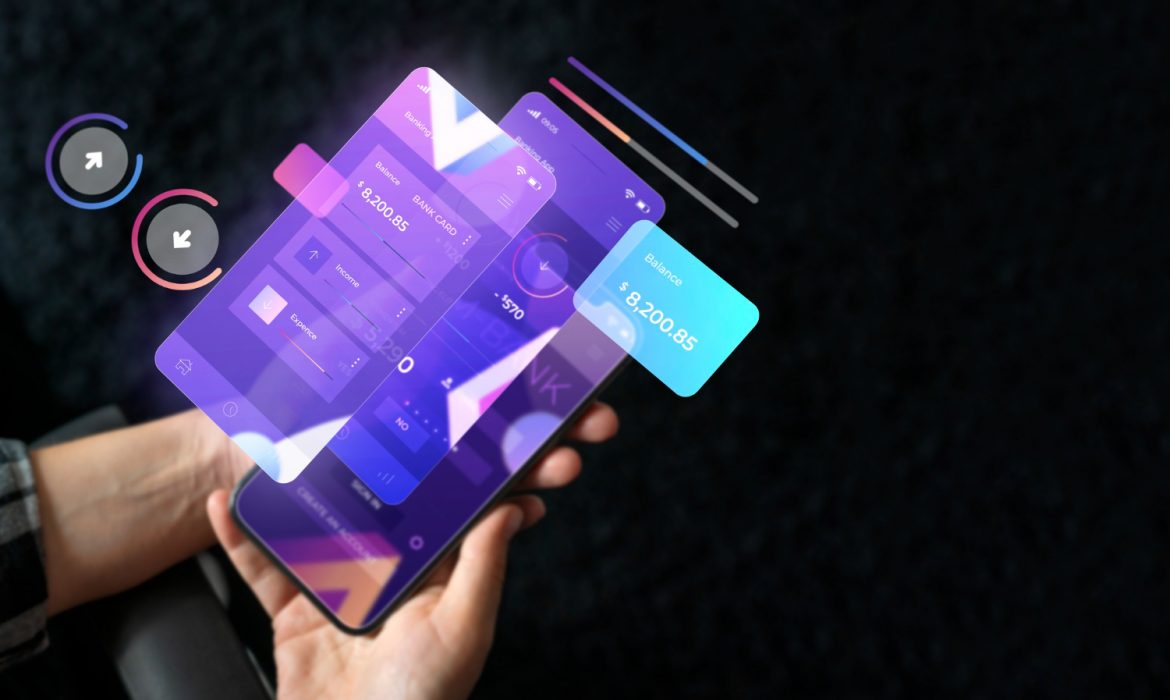Augmented reality has changed how users interact with mobile applications. Flutter can be combined with AR frameworks to create interactive cross-platform experiences. Developers now build AR applications faster while maintaining high performance across Android and iOS devices.
The combination of Flutter AR capabilities with modern development practices opens new possibilities for businesses. Whether you need virtual furniture placement, interactive education tools, or gaming features, Flutter provides the foundation for building these experiences. Companies like FBIP help businesses transform AR concepts into working applications through expert mobile development services.
What Makes Flutter AR Different
Flutter AR refers to building augmented reality applications using Flutter’s cross-platform framework. Third-party plugins integrate AR into Flutter apps since the Flutter engine doesn’t directly support AR functionality. This approach allows developers to write code once and deploy AR experiences on both major mobile platforms.
The beauty of Flutter AR lies in its accessibility. Developers don’t need to learn separate AR frameworks for each platform. Instead, they use unified plugins that connect Flutter apps to native AR capabilities. ARCore handles Android devices while ARKit powers iOS experiences.
Why Businesses Choose Flutter AR Development
Cost savings drive many companies toward Flutter AR solutions. Building separate native apps for Android and iOS doubles development time and budget. Flutter AR cuts this work significantly while maintaining quality.
Speed matters in competitive markets. Flutter’s hot reload feature lets developers see changes instantly during AR app creation. This rapid iteration cycle means faster launches and quicker responses to user feedback.
Cross-platform consistency becomes simpler with Flutter AR. Users expect similar experiences whether they open your app on an Android phone or iPhone. Flutter helps maintain that consistency without duplicating effort.
Core Technologies Behind Flutter AR
Understanding the foundation helps developers make better choices. AR overlays digital elements in the real world while VR immerses users in entirely simulated environments. Flutter AR focuses on blending digital content with physical surroundings.
ARCore and ARKit Integration
Google’s ARCore powers Android AR experiences. It handles environmental understanding, motion tracking, and light estimation. Apps built with ARCore can detect flat surfaces, understand spatial relationships, and place virtual objects convincingly.
Apple’s ARKit serves the same purpose for iOS devices. ARKit works only on mobile devices with A9 or later processors on iOS 11 and newer. This includes iPhone 6s and later models, plus recent iPad versions. Some advanced features require iOS 12 or newer versions.
Popular Flutter AR Plugins
Several plugins bridge Flutter with native AR capabilities. The ar_flutter_plugin_engine stands out as a popular choice. This plugin creates collaborative augmented reality experiences across ARKit and ARCore platforms. Developers can build once and support both ecosystems.
Other options include separate arkit_plugin and arcore_flutter_plugin packages. These work well when targeting single platforms or when apps need platform-specific features. Teams at FBIP evaluate these options based on project requirements and help clients choose the right approach.
Building Your First Flutter AR Application
Creating a basic Flutter AR app follows clear steps. Start with environment setup, add necessary dependencies, then implement core AR features.
Setting Up Your Development Environment
Install Flutter SDK on your development machine first. Download it from the Flutter website and follow installation guides for your operating system. Verify installation by running flutter doctor in your terminal.
Add Android Studio for Android development or Xcode for iOS development. Both IDEs provide emulators and build tools. Real device testing matters more for AR apps since emulators often lack AR capabilities.
Create a new Flutter project using the command line or your preferred IDE. Run flutter create my_ar_app to generate the starter project structure.
Adding AR Dependencies
Open your project’s pubspec.yaml file. Add the ar_flutter_plugin_engine package under dependencies. This plugin supports both ARCore and ARKit from one codebase.
dependencies:
flutter:
sdk: flutter
ar_flutter_plugin_engine: ^latest_version
Run flutter pub get to download the package. Check the plugin documentation for platform-specific setup requirements. Android apps need minimum SDK version updates while iOS apps require camera permissions in Info.plist.
Implementing Core AR Features
Start with plane detection to identify flat surfaces. This feature lets users place virtual objects on floors, tables, or walls. AR frameworks scan the environment continuously, updating detected planes as the camera moves.
Add 3D object placement next. Users tap detected planes to position virtual items. Your code handles the conversion from screen coordinates to world space positions. The AR framework maintains these objects’ positions as users move their devices.
Light estimation improves realism. AR frameworks analyze real-world lighting and apply similar lighting to virtual objects. This makes digital content blend naturally with physical surroundings.
Practical Flutter AR Use Cases
Real-world applications demonstrate Flutter AR’s versatility. Different industries adopt AR for specific benefits.
Retail and E-Commerce
Furniture retailers let customers visualize products in their homes before purchasing. Users point their phone cameras at empty spaces and see how sofas, tables, or lamps fit their rooms. This reduces return rates and increases buyer confidence.
Fashion brands offer virtual try-on experiences. Customers see how clothes, glasses, or accessories look on themselves through AR. This bridges the gap between online shopping and physical stores.
Education and Training
Medical students study anatomy using AR overlays on physical models. Complex structures become easier to understand when students can view them from multiple angles and see inside layers.
Automotive technicians learn engine repair through guided AR instructions. Virtual arrows and labels highlight specific parts, reducing training time and errors.
Gaming and Entertainment
Location-based AR games engage players outdoors. Virtual characters and objects appear in real locations, encouraging exploration and social interaction.
Interactive storytelling apps bring books alive. Characters jump off pages, animations play in physical spaces, and narratives respond to user environments.
Industrial Applications
Warehouse workers locate inventory faster with AR navigation. Virtual paths and labels guide them through complex storage facilities.
Maintenance technicians receive real-time equipment information. AR overlays display specifications, warning indicators, and repair instructions directly on machinery.
Optimizing Flutter AR Performance
Performance directly affects user experience in AR applications. Smooth frame rates prevent motion sickness while maintaining immersion.
Managing 3D Assets
Keep 3D models lightweight. High polygon counts slow rendering and drain batteries. Optimize meshes before importing them into your app. Tools like Blender help reduce vertex counts while preserving visual quality.
Compress textures appropriately. Balance image quality with file size. Modern compression formats maintain appearance while using less memory.
Load assets asynchronously. Don’t block the main thread while loading large 3D files. Show loading indicators when necessary to manage user expectations.
Reducing Battery Drain
AR apps consume significant power through constant camera use and processing. Implement efficient rendering techniques to extend session durations.
Lower rendering resolution when full quality isn’t needed. Users often accept slightly reduced visuals for longer battery life.
Pause AR sessions when apps move to background. Continue tracking only when users actively view the AR experience.
Common Challenges in Flutter AR Development
Every technology presents obstacles. Understanding these challenges helps teams prepare solutions.
Device Compatibility
Not all devices support AR features equally. Older phones lack necessary sensors or processing power. Check device capabilities before enabling AR features. Provide graceful fallbacks for unsupported devices.
Testing across various devices reveals compatibility issues. Physical device testing beats emulators for AR apps. Maintain a diverse test device collection.
Environmental Conditions
AR tracking struggles in poor lighting. Apps need fallback modes or clear user guidance about optimal conditions.
Reflective or plain surfaces confuse plane detection. Apps should handle these situations gracefully, perhaps suggesting users move to different locations.
User Experience Design
AR interfaces differ from traditional mobile apps. Users need clear instructions about moving their devices for plane detection.
Onboarding tutorials help users understand AR interactions. Show simple animations demonstrating required movements.
Flutter AR Market Growth and Opportunities
The AR market continues expanding rapidly. Analysts project the AR market to reach over $50 billion by the end of 2024. This growth creates opportunities for developers and businesses.
Early adopters gain competitive advantages. Companies launching AR features before competitors attract attention and build user bases.
Flutter AR development offers cost-effective entry into this market. Businesses can test AR concepts without massive native development investments.
Getting Professional Flutter AR Development Support
Building production-quality AR apps requires expertise. Development teams need Flutter proficiency, AR framework knowledge, and UX design skills.
FBIP specializes in Flutter application development including AR implementations. Their team understands both technical requirements and business goals. When you need to transform AR concepts into functioning applications, working with experienced developers saves time and resources.
Professional development teams handle complex integrations. They manage plugin updates, optimize performance, and ensure apps meet platform guidelines. This support proves valuable when launching AR products.
Future Trends in Flutter AR
AR technology evolves continuously. New capabilities emerge as hardware improves and frameworks mature.
Shared AR experiences will become more common. Multiple users will interact with the same virtual objects simultaneously. Collaborative features open new application categories.
AI integration will enhance AR capabilities. Machine learning will improve object recognition, spatial understanding, and content adaptation.
Wearable AR devices will expand beyond phones. Flutter’s flexibility positions it well for supporting emerging form factors.
Taking Your Next Steps with Flutter AR
Start small when entering Flutter AR development. Build simple prototypes testing core concepts before committing to full applications.
Learn from existing examples. Many open-source Flutter AR projects demonstrate best practices and common patterns.
Connect with the Flutter community. Active developers share solutions to common problems and discuss emerging techniques.
Consider partnering with experienced teams for your first production AR app. Companies like FBIP provide the expertise needed to avoid common pitfalls while delivering quality results.
Ready to explore how Flutter AR can transform your business? The technology has matured enough for serious commercial applications. Whether you need customer engagement tools, training solutions, or completely new experiences, Flutter AR provides the foundation to build them.
Frequently Asked Questions About Flutter AR
What devices support Flutter AR applications?
Flutter AR apps work on Android devices running ARCore (Android 7.0 or higher with compatible hardware) and iOS devices with ARKit support (iPhone 6s and newer, iPad 2017 and newer running iOS 11 or higher). Not all devices within these categories support AR, so apps should check capabilities before enabling AR features.
How difficult is it to learn Flutter AR development?
Developers familiar with Flutter can pick up AR development relatively quickly. The main learning curve involves understanding AR concepts like plane detection, anchors, and 3D coordinate systems rather than Flutter itself. Starting with simple projects and gradually adding complexity works well for most developers.
Can Flutter AR apps work offline?
Yes, Flutter AR apps can function offline once installed. The AR frameworks process data locally on devices without requiring internet connections. However, apps that download 3D models or sync data with servers need connectivity for those specific features.
What makes Flutter AR better than native AR development?
Flutter AR development allows teams to maintain a single codebase for both Android and iOS platforms, reducing development time and costs significantly. While purely native development might offer slightly more control, Flutter AR provides excellent performance and faster iteration cycles for most use cases.
How much does it cost to develop a Flutter AR application?
Costs vary widely based on complexity, features, and team expertise. Simple AR experiences might take a few weeks while complex applications require months of development. Working with established development companies like FBIP helps ensure accurate project scoping and budget estimates based on your specific requirements.



